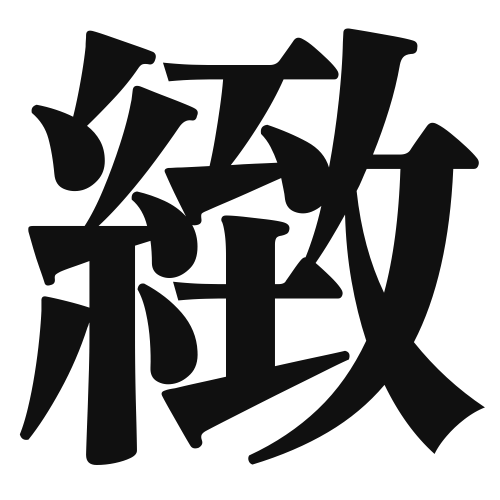1. Overview of Meaning
The kanji “緻” (chi) generally means “fine,” “meticulous,” or “detailed.” It conveys a sense of precision and carefulness in various contexts.
2. Formation and Radical
Formation of the Kanji: The kanji “緻” is a phonetic compound (形声文字) that combines the radical for “silk” (糸) with a phonetic component that suggests its pronunciation.
Radical: The radical of “緻” is 糸 (ito), which relates to threads or fibers, emphasizing the idea of fine detail and intricacy.
3. Examples of Usage
Common Words and Phrases: Some frequently used words that include “緻” are 緻密 (chimitsu – meticulous) and 緻密さ (chimitsusa – meticulousness).
Example Sentence in Daily Conversation: 彼の計画はとても緻密で、成功する可能性が高いです。 (His plan is very meticulous, and it has a high chance of success.)
4. Synonyms and Antonyms
Similar Kanji: A similar kanji is 精 (sei), which also means “refined” or “exquisite,” but it often emphasizes purity and quality rather than detail.
Antonyms: A contrasting kanji is 粗 (so), which means “rough” or “coarse,” indicating a lack of detail or precision.
5. Cultural and Historical Background
Relation to Japanese Culture: The concept of meticulousness is highly valued in Japanese culture, especially in arts and crafts, where attention to detail is essential.
Proverbs and Idioms: One relevant proverb is “細部に神が宿る” (Saibu ni kami ga yadoru), which translates to “God resides in the details,” highlighting the importance of precision and care in one’s work.
